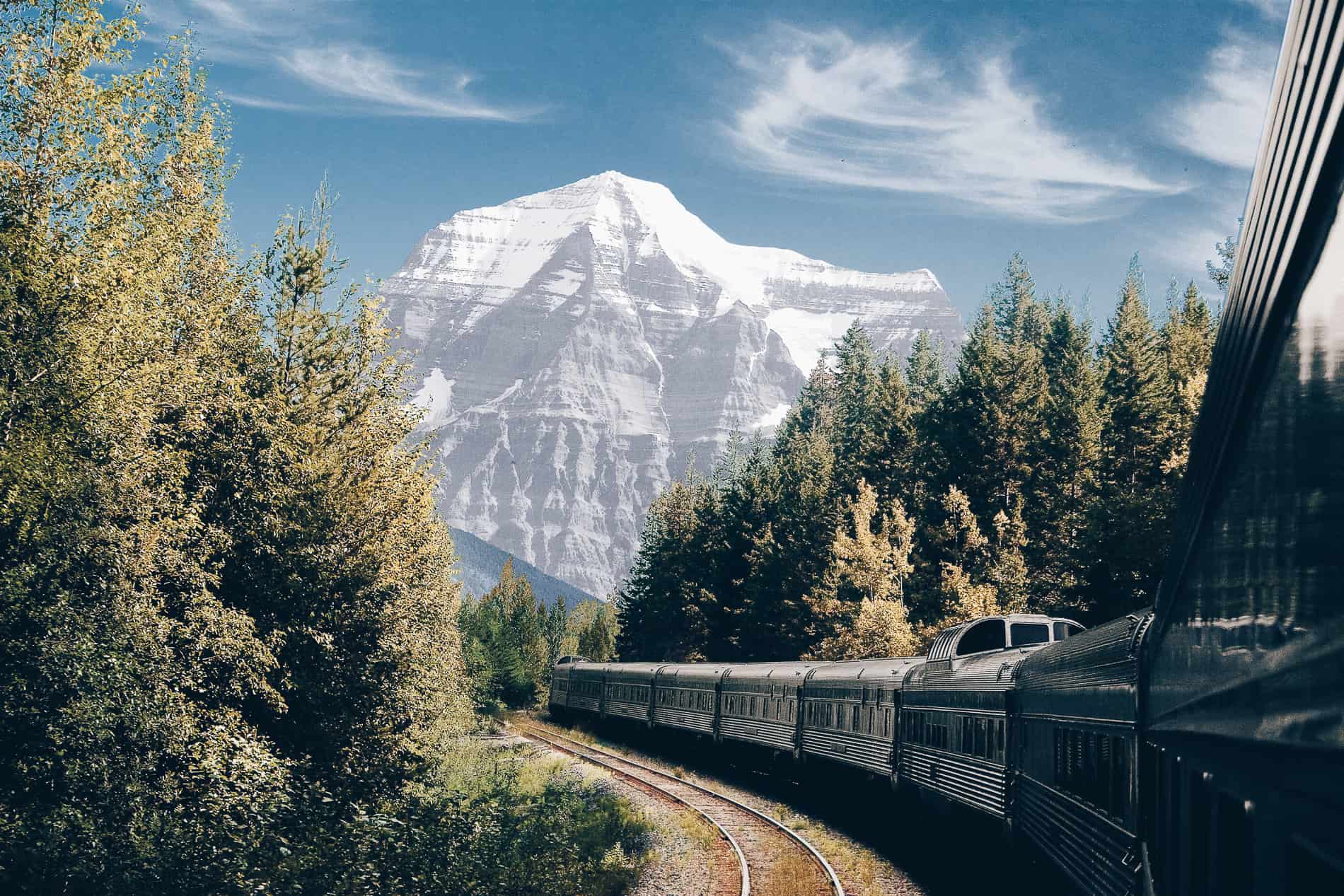With majestic peaks, vast prairies and modern cities, Canada boasts one of the world’s most dynamic topographies. Add friendly people and a culture of acceptance to the mix and you have a dream destination, especially if you want to see it on a coast-to-coast train. Canada’s state-owned rail company, VIA Rail, takes you from Toronto, the largest city in the nation, through the flat prairies and majestic Rockies to the temperate West Coast (and vice versa). It’s one of the world’s most popular train journeys.
Without stopping at too many points, the Canadian (the name of the route) takes roughly four days to crisscross the continent. However, we suggest you take your time and stop off at some of Canada’s smaller cities, towns, and National Parks along the way.
Whether it’s the gorgeous scenery outside your window or the relaxing hum of the train engines, it’s time for an epic Canadian adventure.
Toronto
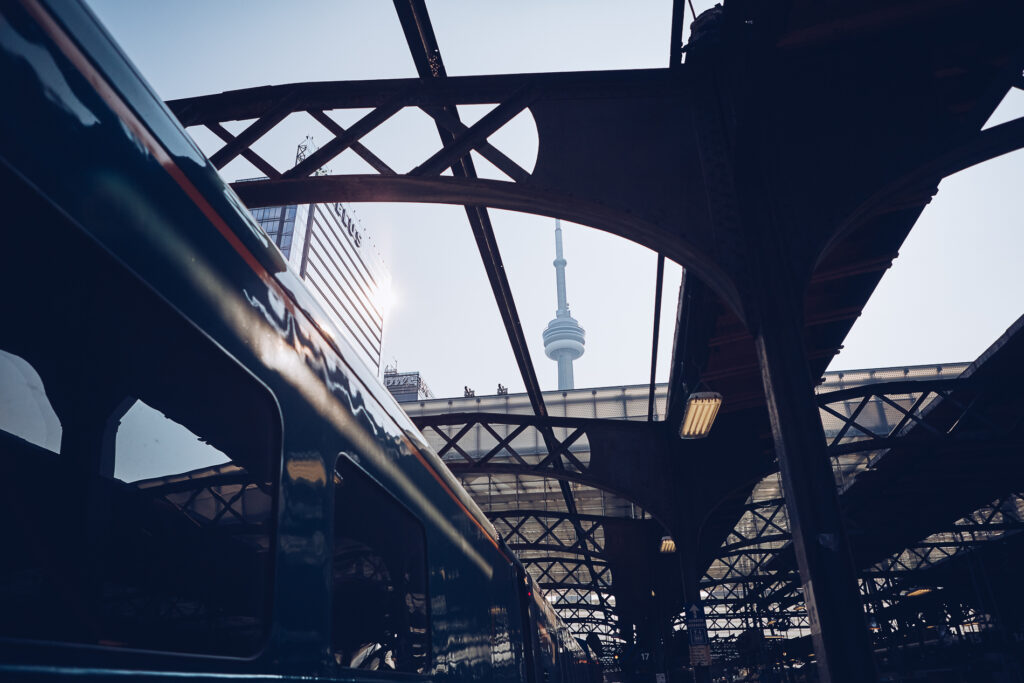
Before setting off on your cross-country adventure, take a day to enjoy the sights in Toronto. A multicultural melting pot brimming with modern buildings, and the ever-present chance that you might bump into Drake, Toronto boasts historic sites and museums aplenty. As you wander around, you’ll see the CN Tower from all over, and for those who aren’t afraid of heights, a trip to the top affords endless views of the city’s sprawling districts. For sports fans, watching the Toronto Maple Leafs play hockey at the Scotiabank Arena is a must.
With many cultures living together, Ontario’s capital offers plenty of cuisines that’ll have your mouth watering. Head to Chef’s Hall in downtown Toronto, a market space run by the city’s most groundbreaking chefs. At Chef’s Hall, you’ll find a range of stalls offering a slice of Toronto’s diverse culinary scene. With its buzzing atmosphere, this is the spot to find Toronto’s coolest foodies. The stalls change regularly but, if you can, head to Ramen Isshin and try the Roasted Garlic Shoyu, a rich, silky soup served with wavy noodles and pork belly chashu.
Toronto to Winnipeg
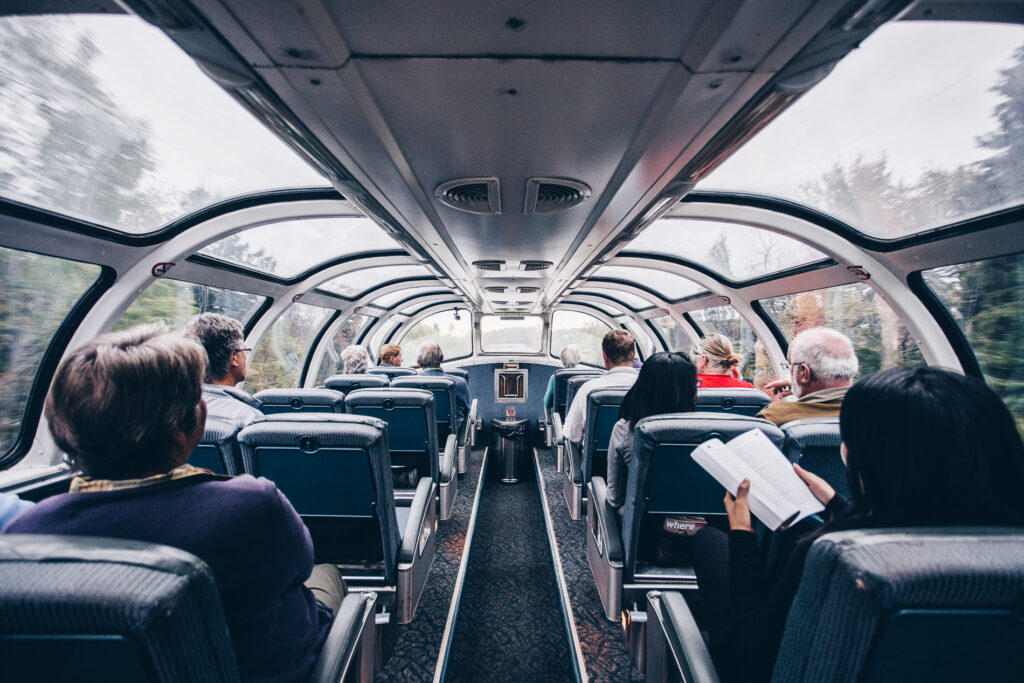
Since the 1960s, VIA Rail’s trains have been departing from Toronto Union Station in the city’s Financial District. Where you get on the train will depend on the class you’ve booked—so make sure you’ve checked your ticket. Regardless of class, all passengers have access to food carriages and the Skyline, a carriage with extra windows that allows you to enjoy more of Canada’s epic vistas.
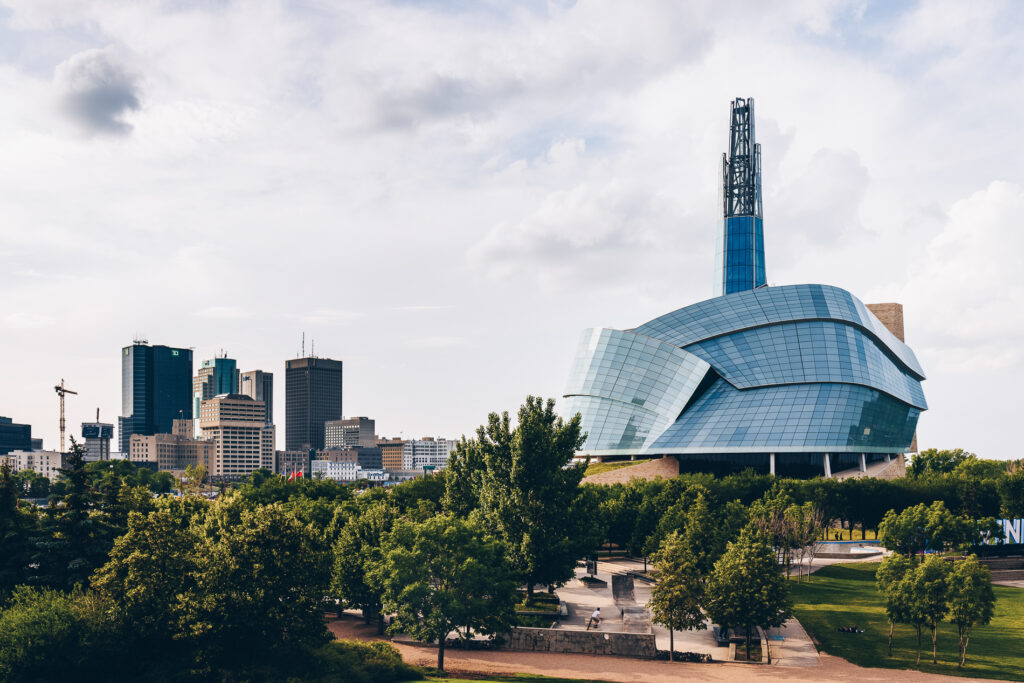
As the train takes you away from Toronto’s vibrant center, watch the CN Tower slowly sink into the horizon. As the metropolis melts away, it’s replaced with the Great Canada Shields, a landmass that stretches across Canada and the northeast of the United States. The train snakes through boggy wetlands that turn into placid lakes that reflect the vast skies. As you chunter along, you’ll go through boreal forests with towering firs that’ll make you feel ant-sized. When you’re not passing the time being mesmerized by the scenery whirring past, you can treat yourself to a brunch of smoked salmon and scrambled eggs in the dining cart.
Getting from Toronto to Winnipeg takes around 36 hours, but has a couple of short pit stops along the way, including Sioux’s Lookout, so you can stretch your legs—or stopover if you so wish.
Winnipeg, Manitoba, aka the “Gateway to the West” is a former industrial town. Once the railroad expanded to this part of the Canadian prairies in the 1800s, Winnipeg saw a boom in transplants and tourism. Today locals use the more colloquial nickname “Peg.” Known as one of the coldest cities in the world, Winnipeg offers plenty of indoor cultural activities. The city is home to Canada’s Royal Winnipeg Ballet, the Royal Manitoba Theatre Centre, and many other museums and cultural heritage sites worthy of a detour. Before you head back on the Canadian, stop at the theater to catch a blockbuster play such as Network or The Three Musketeers.
Winnipeg to Saskatoon
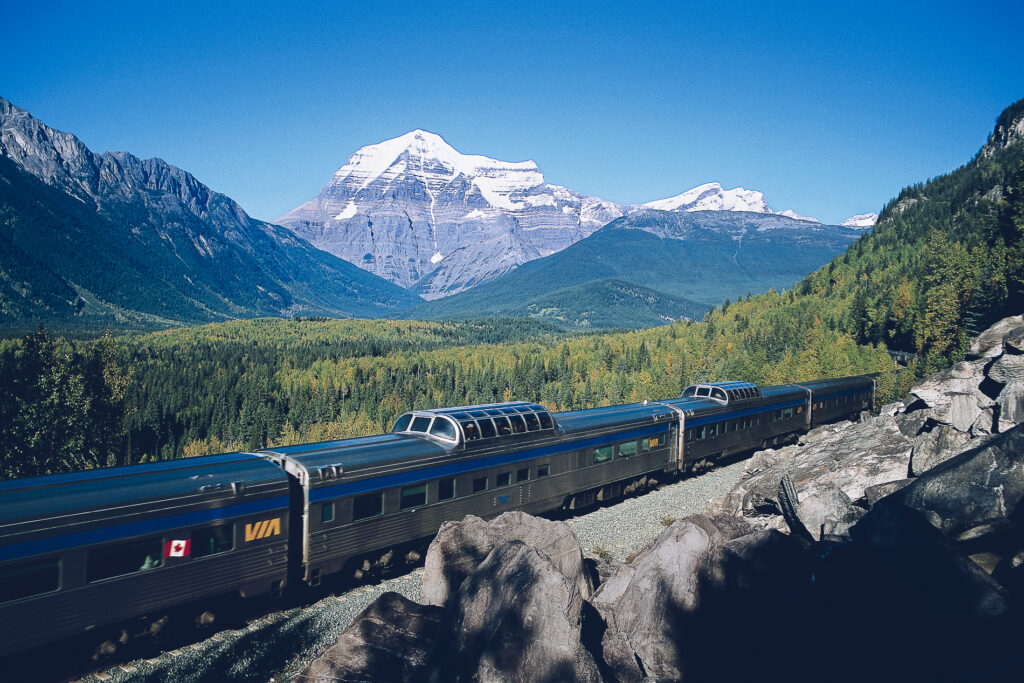
When you set off from Winnipeg, you’ll leave the endless lakes and towering ferns of Manitoba behind and enter the heart and soul of the Canadian Prairies. Here, you’re spoiled by endless grass and wheat fields that stretch as far as the eye can see. Occasionally, clusters of farms or small enclaves pop up as the train plows through Canada’s breadbasket. These vast plains will take you out of Manitoba and seamlessly into Saskatchewan. As you travel, a voice occasionally appears on the tannoy to explain the area’s importance to the country.
Once you arrive in Saskatoon, Saskatchewan, you’ll want to take a detour. Glass skyscrapers jockey for space with large trees. The Saskatchewan River cuts through Saskatoon, with eight bridges connecting the two sides—locals call it “Paris of the Prairies” because of them.
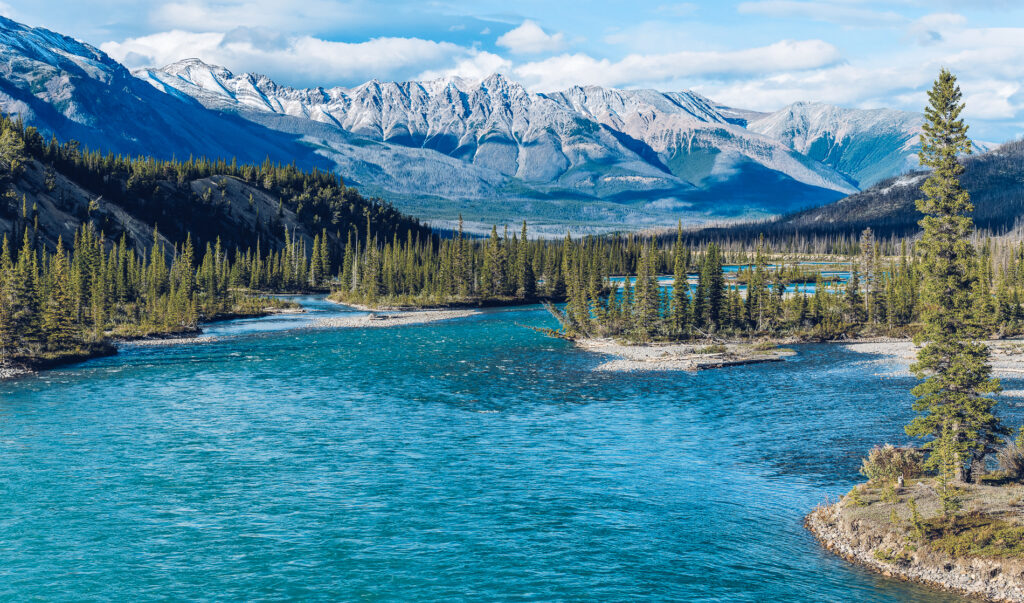
Saskatoon derived its name from a berry that grows locally. The deep purple fruit has a unique flavor that is said to taste like a blueberry but with a sweet, almond finish. The city loves its local delicacy and you’ll find dessert joints all over the city offering their own Saskatoon Berry puddings.
To get the real deal, leave the city center behind and head to the Berry Barn. When you arrive, you’ll find an idyllic farm dedicated to this beloved berry. At the farm shop, you can buy frozen berries to take away, but perhaps they’re not the best thing to take on a train! Instead, enjoy a slice of Saskatoon berry pie, a single-crust butter pastry pie filled with Saskatoon berries and served with ice cream, at their restaurant.
Saskatoon to Edmonton
Leaving Saskatoon means you’re around halfway through your Canada by train experience. The flat golden fields of the prairies pass by and slowly grow into rolling, lush green hills where nimble rivers meet fat, sluggish expanses of water.
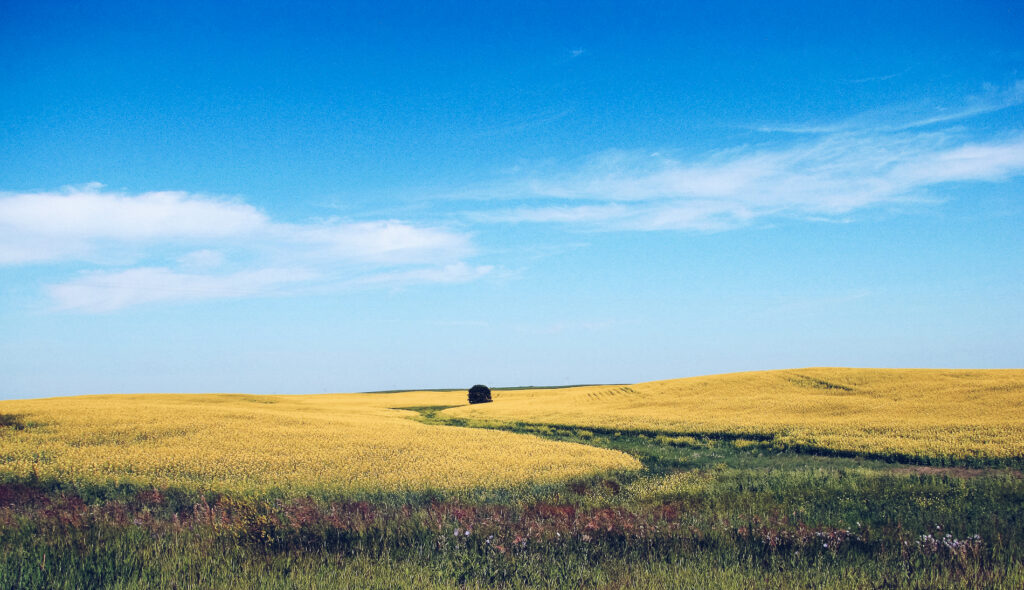
It is during this part of your train ride that you’ll cross the Railway Trestle Bridge, near the town of Fabyan. Built in 1908, the towering steel bridge is 2,775 feet long and 195 feet above the Battle River. This is the border between Saskachtewan and Alberta, Canada’s fourth largest province. As you get closer to its capital, Edmonton, the vast North Saskatchewan River appears alongside the train track and assists you into the city center.
Edmonton can have a reputation for only being a transport hub to the northern tips of Canada and the impressive Jasper National Park, but it’s definitely worth sticking around for a day or two to explore Michael J. Fox’s hometown.
First stop is the Art Gallery of Alberta, an impressive building that complements the art it holds. The city’s river and the Aurora Borealis inspired architect Randall Stout, a protégé of Frank Gehry, to design the gallery’s box buildings and soaring steel curves. This impressive architectural feat holds nearly 8,000 artworks, mostly from Canadian artists.
In the evening, make your way to Whyte Avenue, just south of the center. This quaint street is now a heritage area and brims with quaint wooden apartment blocks that are only two-storeys high. Near Edmonton University, the Avenue has a relaxed, bohemian feel with plenty of independent coffee shops and boutique stores.
Edmonton to Jasper
After some downtime in Edmonton, it’s time to really ramp up the spectacle for your trip, as this is where you’ll first glimpse the Rocky Mountains.
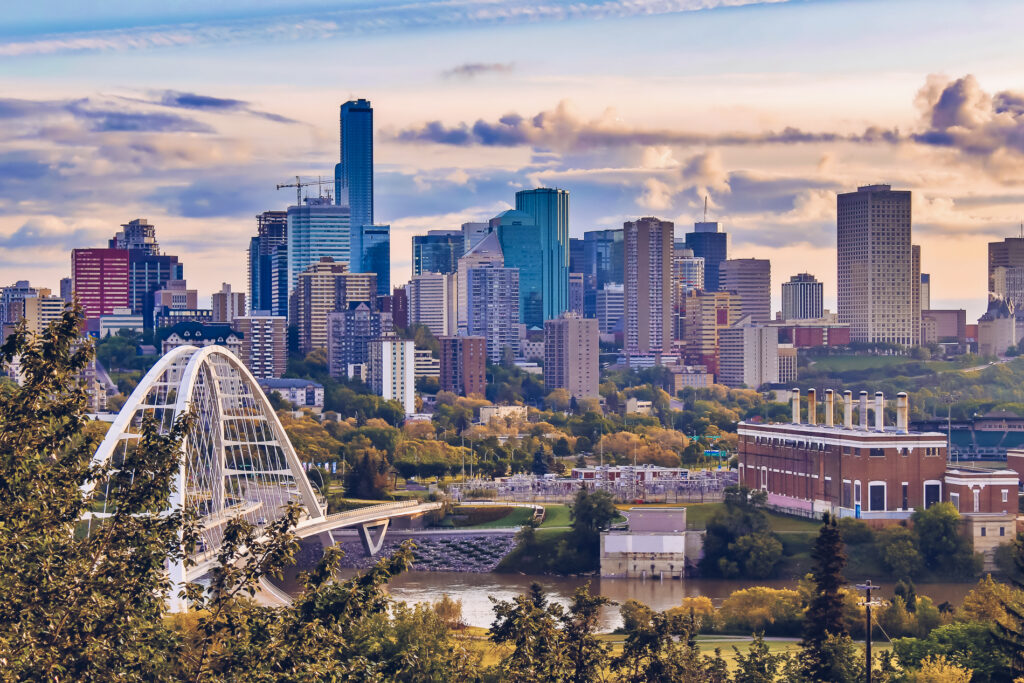
Canada’s most impressive mountain range, also known as the Rockies, stretches across 3,000 miles and is beloved by Canadians and Americans alike. Any train through the Canadian Rockies affords views that you can’t get anywhere else. From the Canadian’s window, the mountains look almost superimposed against the vast blue sky. The train runs in tandem along the Athabasca River, with the stunning mountain peaks looming on the other side.
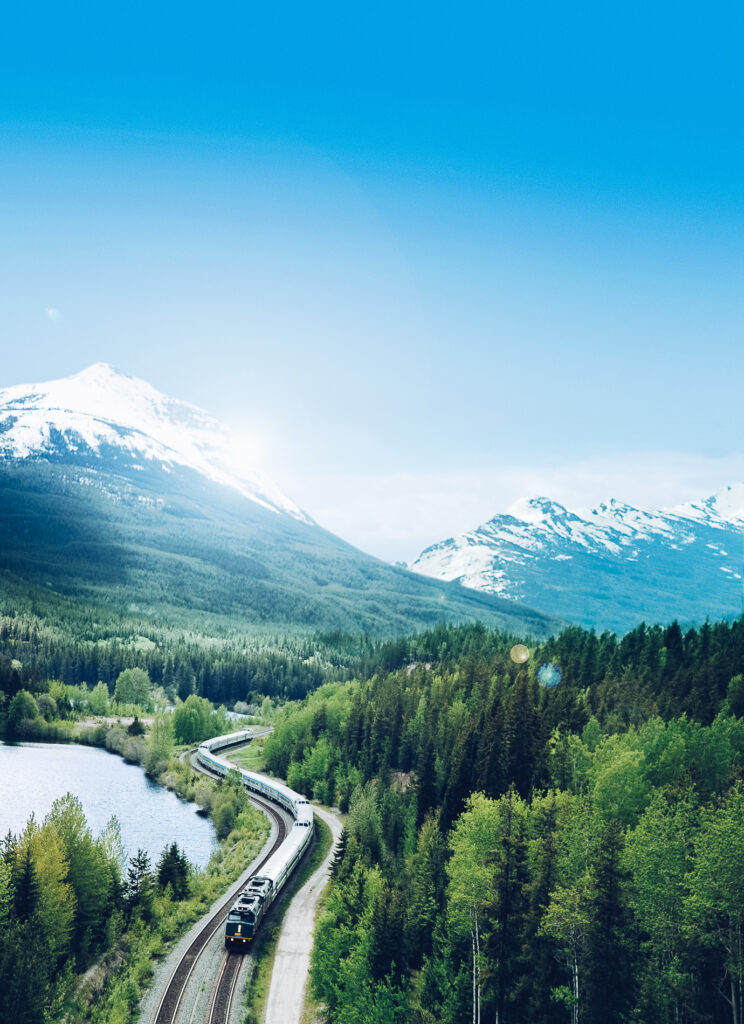
The river gives way to gigantic freshwater lakes, where you can catch the reflections of the emoji-like mountains in the still waters. With views like these, take advantage of the Skyline carriage.
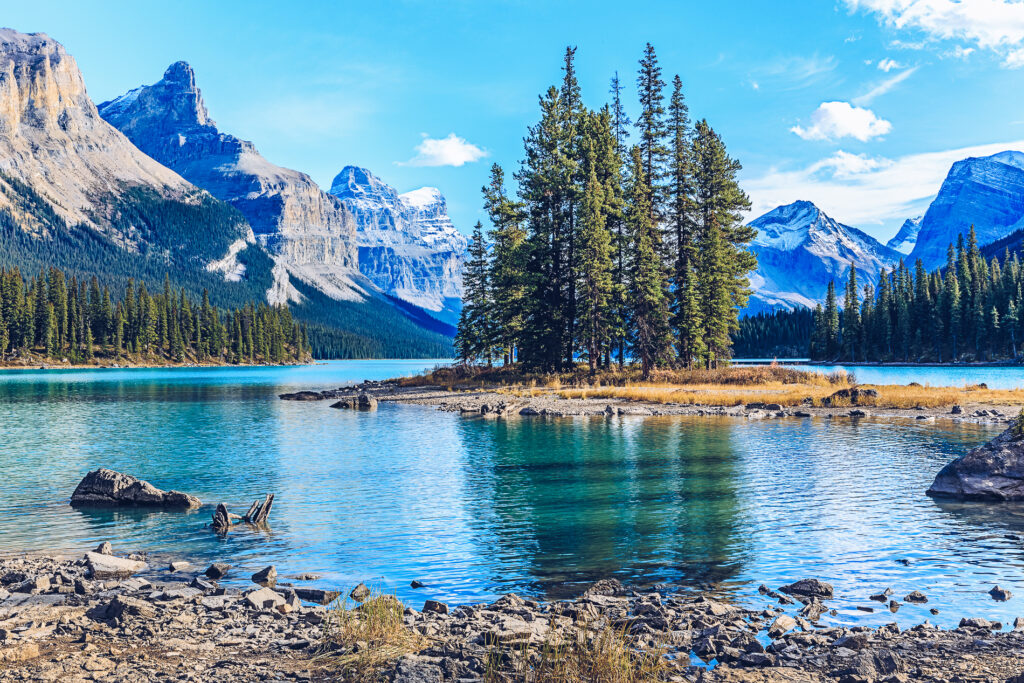
Jasper’s train station is a quaint train lodge that’s shadowed by the Rockies and is VIA Rail’s entry point to Canada’s largest National Park. Even if you’re more of a city dweller, it’s definitely worth embracing the adventurer lifestyle when you arrive. Jasper National Park is a UNESCO World Heritage Site and boasts an impressive array of both manmade and natural wonders. Maligne Lake, a glacial-fed lake, stuns as does the Glacial Walk, a glass walkway that stands 918 feet above ground. There’s also a menagerie of wildlife waiting to be spotted, such as grizzly bears, elks and bighorn sheep.
Jasper to Kamloops
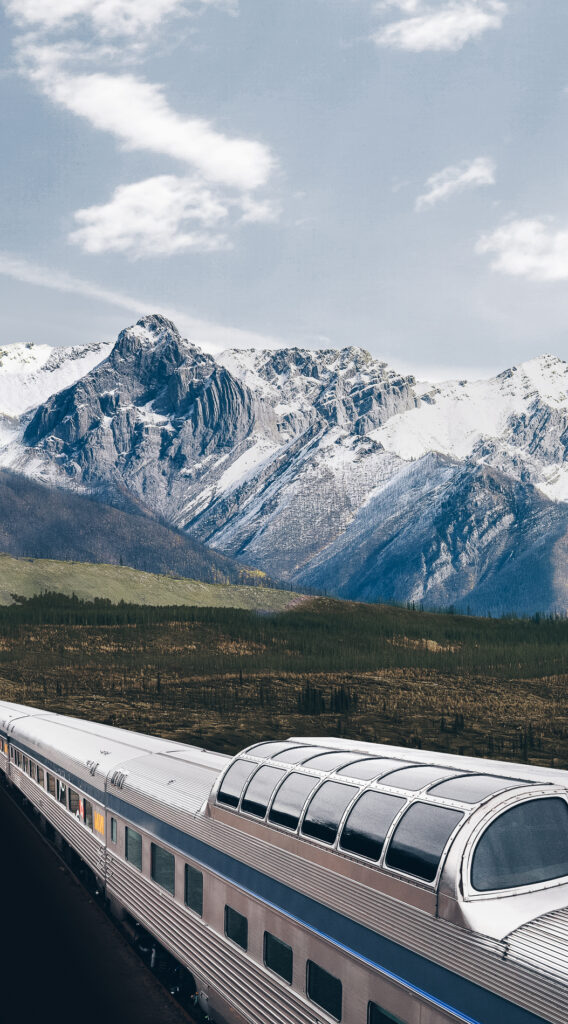
Don’t worry, you haven’t seen the last of the Canadian Rockies just yet. As you leave Jasper station, the Canadian Rockies train continues through the National Park. First, you’ll pass through tunnels cut in the mountains, then you’ll head along the Yellowhead Pass, a mountain pass that cuts through the Continental Divide.
As you continue through this fantasy land, the vast lakes become almost turquoise, and clouds linger daintily near the mountainsides. It’s on this stretch that the train passes Mount Robson, the highest point of the Rockies—hopefully, the clouds won’t hide its majestic presence!
Just before arriving in Kamloops, you’ll pass Pyramid Falls, named for the way the water splays across the rock in a triangular formation. You’ll then follow the North Thompson River to Kamloops. Another destination for the more outdoorsy type, the small city offers plenty of hiking trails and golf courses.
Alternatively, you can use your time in Kamloops to learn about Canada’s First Nations. Known as the Tk’emlúps te Secwe̓pemc, the indigenous people of the area play an active role in the city’s politics and wellbeing. The Secwepemc Museum is a park dedicated to protecting the culture and language of the Secwepemc people. The museum stretches over more than four hectares and is full of trails and insightful displays explaining the history of the Secwepemc.
Kamloops to Vancouver
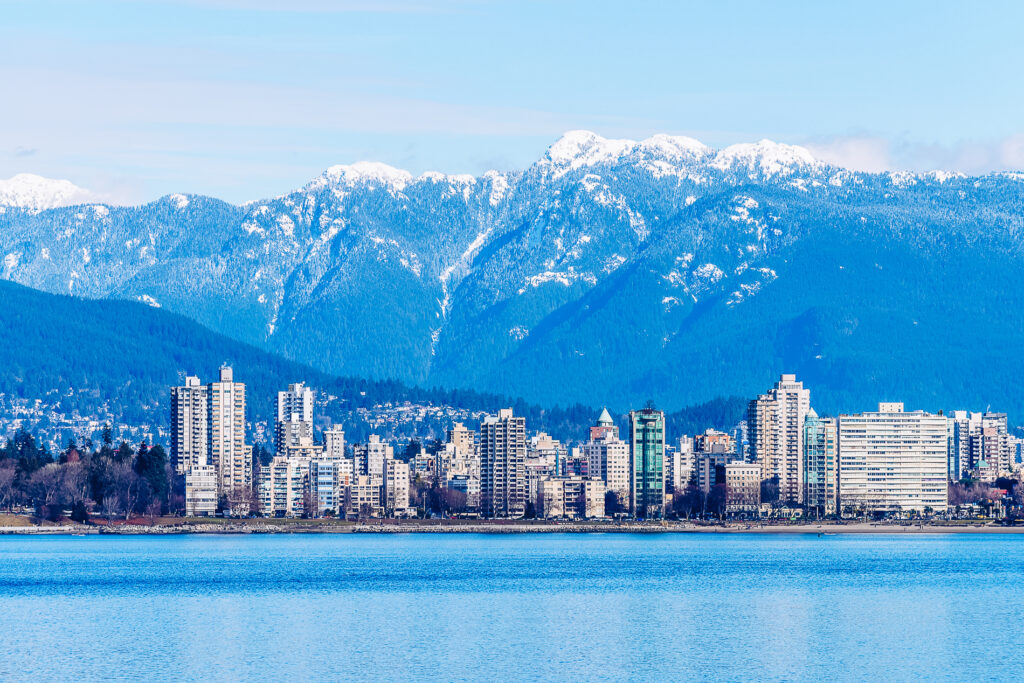
This is the last stretch of your mammoth train ride through Canada. The bombastic landscape of the Rockies dramatically changes to a drier, nearly arid topography. Now firmly in British Columbia, this part of the journey will seem positively short, taking around just six hours.
The train saunters past Kamloops Lake, a long stretch of water that turns into the Thompson River. After riding around its edges, the train makes its final push to Vancouver—a trifecta of mountains, sea and urban expanse.
A vibrant metropolis, Vancouver boasts a range of activities to keep you busy, from excellent Pacific Rim cuisine to kayaking on the river to hip coffee shops. Leave the skyscrapers in downtown behind and take a stroll to Gastown, the city’s oldest neighborhood. Wander the cobblestone streets and admire the quaint Victorian buildings. Get your selfie at the Steam Clock, a grandfather clock powered by steam, and then make your way to the Vancouver Lookout, a towering Brutalist structure that offers 360-degree views of the city.
Once you’ve absorbed all of Vancouver’s delights, the question is, where will the train take you next?
Traveling Canada by Train: Useful Tips

Trains are the perfect way to see any country. Credit: VIA Rail
- The Canadian train offers three different classes, including Economy class, Sleeper Plus and Prestige.
- Economy class only offers seats—so this might get uncomfortable after a few days!
- VIA Rail shares its railway tracks with freight trains, so delays to services aren’t uncommon.
- If you buy a direct ticket from Toronto to Vancouver (or vice versa) you cannot hop on and off as you wish. To do this, you’ll need to buy individual tickets for each stop.
- If you decide to stop off on your Toronto to Vancouver cross-country train journey, give yourself at least 24 hours between journeys to ensure you don’t get held up by delays.
- Make sure you book all your tickets before your journey starts, to ensure getting a place on the trains.
